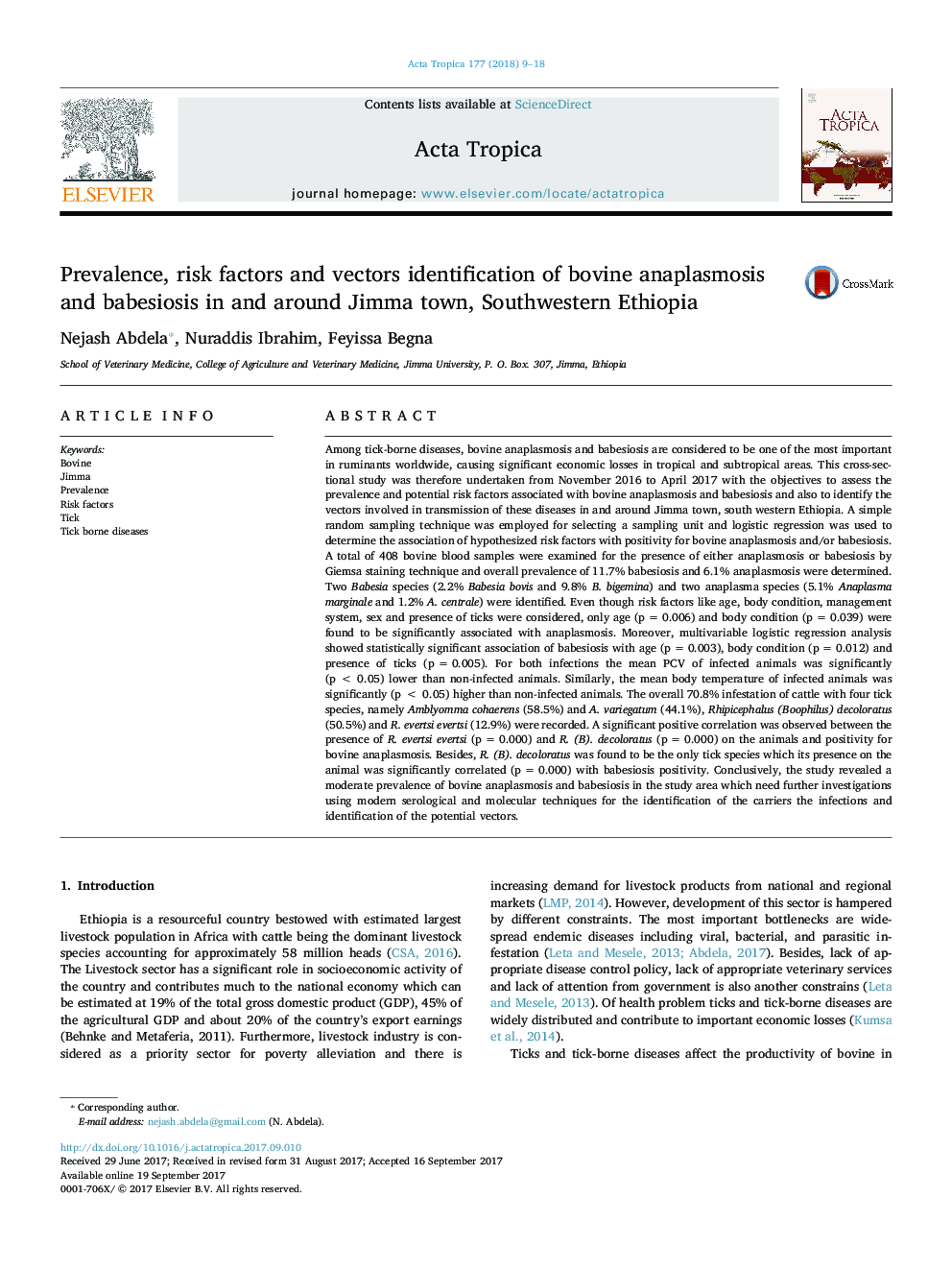| کد مقاله | کد نشریه | سال انتشار | مقاله انگلیسی | نسخه تمام متن |
|---|---|---|---|---|
| 5670978 | 1592747 | 2018 | 10 صفحه PDF | دانلود رایگان |
Among tick-borne diseases, bovine anaplasmosis and babesiosis are considered to be one of the most important in ruminants worldwide, causing significant economic losses in tropical and subtropical areas. This cross-sectional study was therefore undertaken from November 2016 to April 2017 with the objectives to assess the prevalence and potential risk factors associated with bovine anaplasmosis and babesiosis and also to identify the vectors involved in transmission of these diseases in and around Jimma town, south western Ethiopia. A simple random sampling technique was employed for selecting a sampling unit and logistic regression was used to determine the association of hypothesized risk factors with positivity for bovine anaplasmosis and/or babesiosis. A total of 408 bovine blood samples were examined for the presence of either anaplasmosis or babesiosis by Giemsa staining technique and overall prevalence of 11.7% babesiosis and 6.1% anaplasmosis were determined. Two Babesia species (2.2% Babesia bovis and 9.8% B. bigemina) and two anaplasma species (5.1% Anaplasma marginale and 1.2% A. centrale) were identified. Even though risk factors like age, body condition, management system, sex and presence of ticks were considered, only age (p = 0.006) and body condition (p = 0.039) were found to be significantly associated with anaplasmosis. Moreover, multivariable logistic regression analysis showed statistically significant association of babesiosis with age (p = 0.003), body condition (p = 0.012) and presence of ticks (p = 0.005). For both infections the mean PCV of infected animals was significantly (p < 0.05) lower than non-infected animals. Similarly, the mean body temperature of infected animals was significantly (p < 0.05) higher than non-infected animals. The overall 70.8% infestation of cattle with four tick species, namely Amblyomma cohaerens (58.5%) and A. variegatum (44.1%), Rhipicephalus (Boophilus) decoloratus (50.5%) and R. evertsi evertsi (12.9%) were recorded. A significant positive correlation was observed between the presence of R. evertsi evertsi (p = 0.000) and R. (B). decoloratus (p = 0.000) on the animals and positivity for bovine anaplasmosis. Besides, R. (B). decoloratus was found to be the only tick species which its presence on the animal was significantly correlated (p = 0.000) with babesiosis positivity. Conclusively, the study revealed a moderate prevalence of bovine anaplasmosis and babesiosis in the study area which need further investigations using modern serological and molecular techniques for the identification of the carriers the infections and identification of the potential vectors.
Journal: Acta Tropica - Volume 177, January 2018, Pages 9-18
